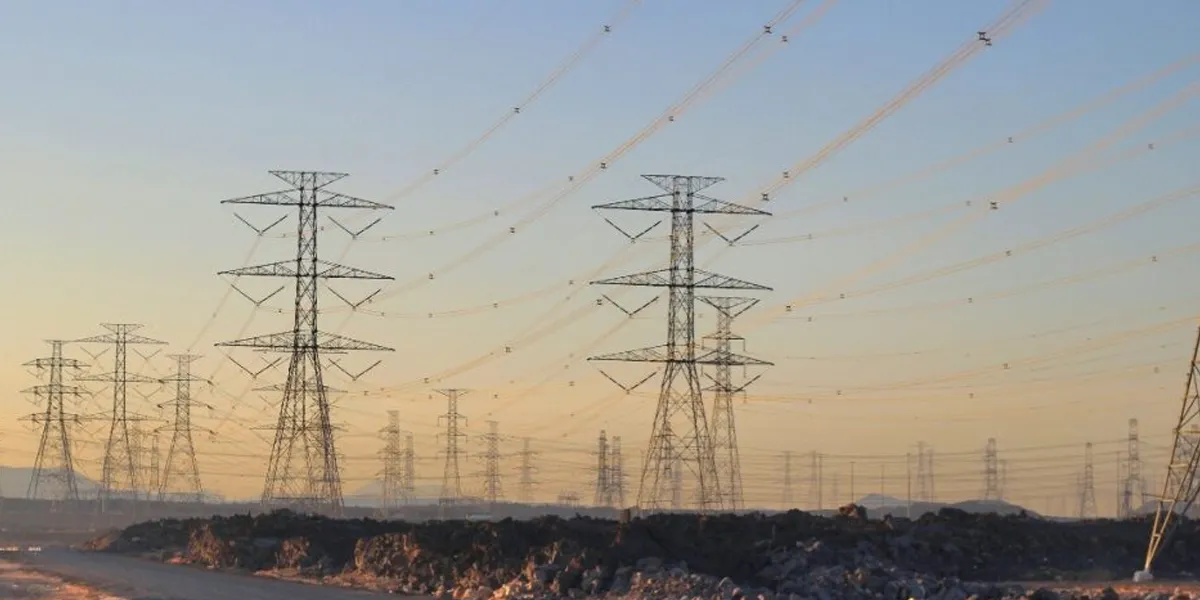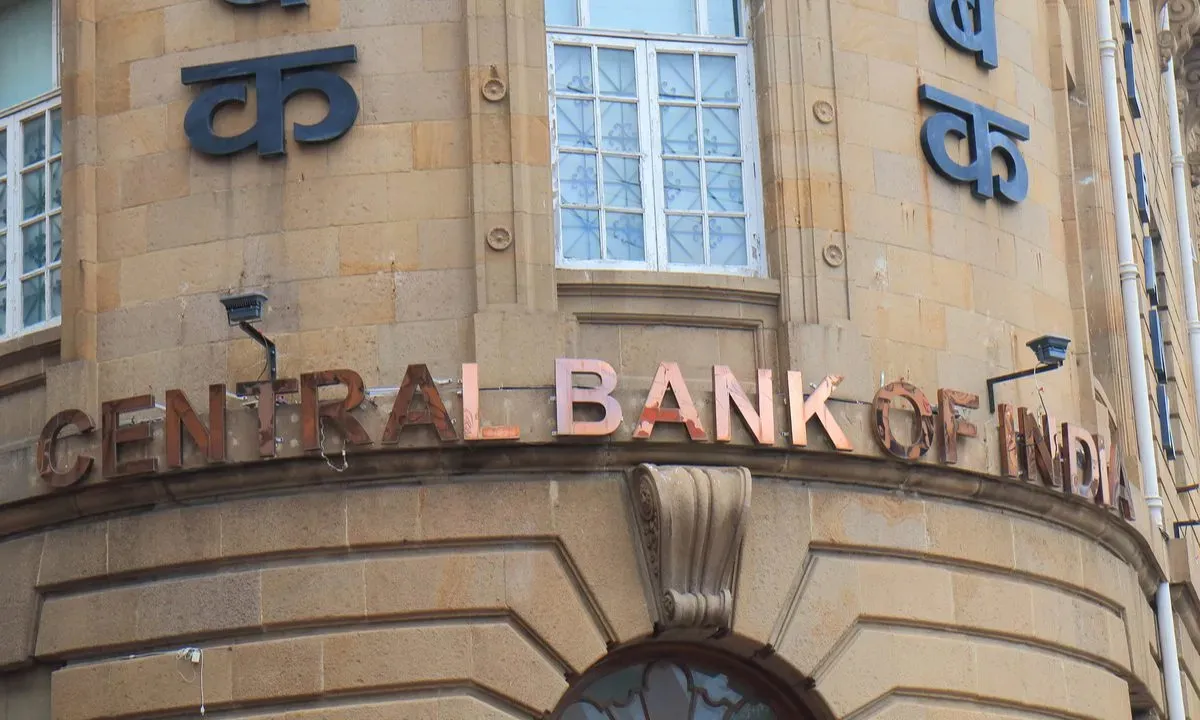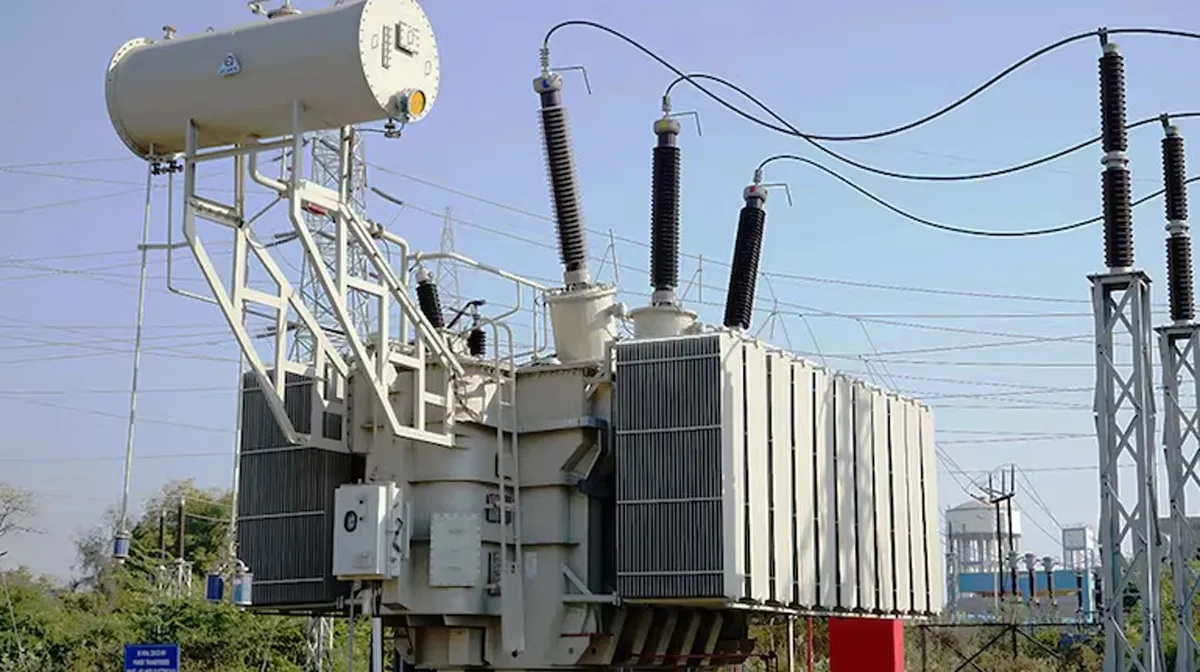- Home
- Building Material
- Cement
- Will Modi's economic package revive Indian businesses?
Will Modi's economic package revive Indian businesses?
The country has been reeling under heavy economic stress due to the COVID-19 driven lockdown. The impact has put core sectors into a downward spiral, including construction projects, construction equipment, MSME businesses and more! Prime Minister Narendra Modi recently announced a Rs 20 lakh crore stimulus for the economy, committing as much as 10 per cent of the GDP amount to address the financial stress. Will PM Modi's relief package rescue India? Will the economic package revive Indian businesses?
Construction World and Infrastructure Today organised a free webinar with a distinguished panel of experts to discuss and deliberate on this topic. The webinar began with presenter Pratap Padode, Editor-in-Chief, Construction World and Infrastructure Today, welcoming the guest panellists to the session. The panellists included industry stalwarts – Vinayak Chatterjee, Chairman, Feedback Infra; Harshavardhan Neotia, Chairman, Ambuja Neotia Group; Madan Sabnavis, Chief Economist, CARE Ratings; and Pradeep Singh, Former Advisor-Infrastructure, Government of Jammu & Kashmir.
Economic scenario
Pratap Padode, Editor-in-Chief, Construction World and Infrastructure Today, on an opening note, went on to highlight where our economy stands. “The economy was already flailing earlier this year and then the finance minister proposed the National Infrastructure Pipeline as a major infrastructure plan of Rs 102 trillion. But as per the Economic Survey, the time just before this shows that our sectors were failing, be it agriculture, industry, services...our GDP was plunging downwards. The credit to MSMEs and large industries has gone downwards. Because of these times of COVID, we now have lower imports and exports have also been down.” He further highlighted the infrastructure investments in the last six years – from Rs 5 trillion in FY2013 to Rs 10 trillion in FY2018 – showing the swing towards more infrastructure. “But the PMI index has really crashed because there was no industrial activity after the middle of March!” he exclaimed.
Will India have a negative growth rate?
The Indian economy was in a take-off mode in 2019-20, around the time the budget was presented, averred Madan Sabnavis, Chief Economist, CARE Ratings. It was felt that economic growth would generally tend to be in the range of around 5 per cent for 2019-20, and that would be a strong foundation on which higher growth could be built for 2020-21 and 2021-22. “The Union Budget for 2020-21 had assumed that growth would actually move towards 7 per cent and it was felt that the problems we had an account of GST was behind us and that things would normalise in FY20-21, and there were the usual assumptions of a normal monsoon, the usual rural demand coming in. Then, there would be some more private investments coming in, and some of the data from RBI showed that there was a tendency for capacity utilisation to actually improve until September. But however, we have seen that things have not quite played out according to what was expected.” Looking at 2019-20, on account of the lockdown we had even for a single month, he notes that things have turned down dramatically in the downward direction. “We can see the PMI coming down to 25-27 – which is a clear indication that there is a negative sentiment that came about just because of that particular one week of shut down in March.” He went on to add: Now just think of a situation in April and most of May where there was a shutdown across all sectors of the economy – we don't really look at this improving significantly. Our PMI could be moving up from say 27 to 35-40, but it will still indicate that the confidence level overall is negative. We are in precarious situation where there will be a very big negative growth coming from a number of the services, especially looking at hotels, trade, transport, storage, communications and a part of road transport. Real estate is something which has around share of 15% in GDP – that's going to have a major negative impact. Even the banking and financial services, we could be expecting a positive growth there to be overwhelmed by a large negative number – so we have a negative number also coming up there.Speaking about construction, Sabnavis noted that for 2019-20 a positive growth number was projected in the GVA, which is definitely going to move into the negative territory. “The entire real estate and construction sectors have been deeply impacted, primarily also on account of the large scale labour migration taking place, and these sectors typically require a lot of migrant labour who are unlikely to return anytime soon. Even talking in terms of normalcy, there will be a pressure of labour. For manufacturing, we could believe that some bit of automation can probably replace the labour which has been lost. But areas like construction, where we require this unskilled labour in large numbers, will have a major challenge.
Looking at India's GDP for 2020-21 on account of the pandemic and things probably not be easing out before the second half of the year, Sabnavis is looking at the best possible situation of a positive growth rate of 1 per cent. “In fact, our revised numbers show that we could actually get into the negative territory. Negative GDP growth looks very much likely, except a few sectors like agriculture, the government sector, telecom, FMCG, drugs and pharmaceuticals, which could be registering positive growth rate. If at all we do get a positive sense in our GDP, it will be more because of government spending.”
Coming to the economic package announced by the government, Sabnavis believes that it did not quite provide the kind of stimulus we were expecting. “When we earlier predicted this growth rate of 1 per cent, we expected some additional spending coming from the government. But the announcement has been more on the supply side rather than the demand side. So the negative growth rate in GDP looks very much likely for 2020-21.”
Decoding the fiscal stimulus package
Commenting further on the current situation, says Vinayak Chatterjee, Chairman, Feedback Infra, highlights, “A classical stimulus package, the classical edifice is broadly that 70 per cent is earmarked for a demand stimulus, about 20 per cent is earmarked for a liquidity infusion and about 10 per cent comes for all the transition costs of reform – the monetary and financial costs. So you have a 70-20-10 pyramid – 70 per cent demand creation, 20 per cent equity infusion, 10 per cent reform-oriented. What we have actually seen is that the pyramid is inverted. I would even be optimistic to say that we have seen 10 per cent of demand creation, 70 per cent reform and may be 20 per cent liquidity. So the expectation of the stimulus pyramid 70-20-10 has been inverted. So the first point is that the current set of announcements do very little for demand stimulation, which is very worrying because without the demand stimulation, where will the multiplier effects come from, where will the jobs come from, where will the efforts come from for picking the economy?”Speaking of the National Infrastructure Plan, he says it envisages not Rs 20 lakh crore from the starting year, but about Rs 15-16 lakh crore from the year one, where we are today. It seems a long haul now with the private sector completely out of making any investments, the state's being fiscally very strap; the burden is coming on the Centre to rise up to fund the infrastructure aspirations of the country. “Now, doing Rs 15 lakh crore by the Centre is clearly out of the question. So many of us in the infrastructure sector must reconcile ourselves to the fact that even with the best of efforts in this year, with the kind of fiscal strain that we are see, if we are able to do about Rs 7-8 lakh crore, we will be blessed.”
The second point, which Chatterjee has been arguing for a long time now, is that much of the discourse is happening within the box of the consolidated fund of India, what is called the Union Budget. “We constantly talk of 3-4-5 per cent of the consolidated fund of India. In cathartic moments like this, which require out-of-the-box thinking, I have been arguing that we have to have a twin engine running. You have to have the national, you have to have the consolidated funds of India – which is the national income accounts, and you have to start a new fund what I have called the national renewal fund, which I have checked with a lot of policymakers and economists, and there is a lot of traction for the idea. This national renewal fund must compliment the Union Budget’s efforts in kick-starting the economy.” In his view, a clear calculation leads him to the conclusion that the size of the fiscal stimulus package should have been about Rs 30 lakh crore; it should have been about 14 per cent of GDP, 4 per cent should have come from the increased fiscal deficit from the Union Budget, and 10 per cent should have come in to transit from a new entity called the national renewal fund, which should be a historic 50-years fund – 60 per cent based on government domestic borrowings and 40 per cent from chief developmental long term finance. “To summarise my view of the inverted pyramid, my view of a Rs 30 lakh crore stimulus, we need to have out-of-the-box thinking – not just think within the traditional box of the consolidated fund of India, but one engine running there with a 4 per cent expansion in fiscal deficit and a 50-year long-term fund called the national renewal fund which will take care of the balance 10 per cent.”
Have the FM’s announcements been able to address demand, liquidity or social pain?
In the view of Harshavardhan Neotia, Chairman, Ambuja Neotia Group, too, most of the industry thinks that enough hasn't been done for demand stimulation and perhaps the inverted pyramid that Chatterjee talked about. “It is obviously not possible that the government is not aware of all these situations because there are N-number of economists, there are so many webinars happening and I'm sure many of the government officials are also attending them, and all the inputs have been taken from various industry bodies. So it is quite evident that all these ideas have gone to them, and in spite of that they have chosen not to do it. So that leaves me with a question: What is it that we don't know? I am certain that it can't be that the government has just sort of missed it because it is not something that would not they would not be aware; they would certainly be aware of what economists and thinkers and the business community are speaking.”
Here, he adds: “So if I have to make a guess, it could be that perhaps they either probably think they ought to do something closer to the time when the markets open up – so is it that they are waiting for that kind of a period which is more targeted. The other is that they may have come to some internal calculation that says that the kind of stimulus that is required to really do this is probably just not affordable and they don't have the bandwidth to do that – in which case they are reconciling to the idea that let everyone find creative ways to manage the situation. I keep asking this question to myself – that what seemed to be an obvious solution that ought to have been provided to the industry, if it didn't come after so many months of deliberation, clearly there is a reason, and it is important for all of us to search for that reason.”
Does the package really address the major concerns?
Pradeep Singh, Former Advisor-Infrastructure, Government of Jammu & Kashmir, feels that India is poised at another 1991 moment. “Nothing like a good solid crisis to mobilise us Indians!” India broke out of many of its age-old shackles and the so-called Hindu growth rate in the face of the 1991 crisis. We are destined to break many more shackles this time, he averred. “People are doing arithmetic and concluding unhappily that only Rs 3.5 or 4 lakh crore of the Rs 20 lakh crore is the actual so-called cost to government. The rest of it is actually our money. Government money is our money too, the taxpayers money, which has been budgeted for public purposes. When the government decides to give it to purpose X, it has to ultimately take it away from purpose Y. So the question we should really be asking is: Are these measures going to have a positive impact, and if not, what can be done to improve that?”When on April 27th, three days after the Franklin Templeton crisis, the RBI announced Rs 50,000 crore special liquidity facility to enable purchase of investment grade paper for mutual funds, it saved the debt markets from a meltdown, Singh believes. “When the discoms will receive Rs 90,000 core loans against receivables, when the MSMEs will receive 370,000 crore of collateral free loans, subordinate debt and equity injections, that will ensure that these engines of employment generation keep running. All that is real money, although just liquidity, although our money. In fact that all such steps do not involve an outgo of government funds is not bad news, it is actually good news because this safeguards the taxpayers money for other purposes.”
That said, there is no doubt of course that when the crisis is as huge as the one we are facing now, government spending also has to step in; government also has to provide relief to those affected the most; as well as create demand, said Singh. “Nearly Rs 4 lakh crore has been provided in the form of additional allocations for PM Garib Kalyan Package, direct cash transfers, support to migrant workers, street vendors, small and marginal farmers, etc. Is this amount enough? Of course, not. Five times this amount, maybe 10 times this amount may not be enough given the enormity of the challenge and the poverty in this country. It is also true that the amount provided is only 20 per cent of the much-wanted Rs 20 lakh crore. But the fiscal rule is just not there. Neotia seemed to be referring to this constraint of the government. If the government were to be irresponsible, they can easily borrow large amounts from the market or even worse print money in large quantities and distribute relief. But it will not be long before this comes back to hit the same very poor in the form of inflation and high interest rates, to come back and hit the same very growth aspirations by the high interest rates.”
The most effective quickest and cheapest way for priming the pump, according to Singh, will be to safely, steadily and quickly reopen the economy, after all, why has the economy slumped – because people, consumers and producers are locked up in their homes; demand is down because people have lost their jobs and because people are locked up. “As the economy opens up, so will the demand.”
What is the solution?
A problem requires a matching solution. “It is not about merely being apologetic about being unable to provide the right sledgehammer solution, which the intensity of this problem deserves – that 400 million Indians are being pushed into destitution, joblessness has crossed 25 per cent in this country,” highlighted Chatterjee. “One out of every four Indians is unemployed, and I think it is an underestimate. The size of the misery is humongous, and if we become apologetic for the government and say that this signs of destitution in urban India – 400 million people out of our 1,300 million are being pushed into a life of severe destitution and uncertainty about the future. The size of the problem is so humongous that to say that the finance minister must live by the conventional book and we must be conservative and do what is possible within the rectitude of the existing fiscal budget of India, does not match the magnitude of the problem.”“If you agree to the sheer magnitude of what is going to hit us and remain with us for the next three to four years, if nothing is done, the sheer scale of what is required does not match with the effort,” he went on to add. This is a problem that is not normal; it is a historic huge problem that deserves an out-of-the-box solution. Chatterjee added, “My suggestion is to create a 50-year national renewal fund – even credit rating agencies have said that it is clear that 60 per cent can come from borrowing money. If the Japanese can give 1 lakh crore at 0.5 per cent for 60 years for the bullet train project, surely, institutions of that size and stature can contribute to the 10 per cent of a national renewal fund, which should have a corpus of clearly about Rs 22-23 lakh crore; it should be a separate accounting entity outside the consolidated fund of India and that amount of fund should be used for demand stimulation so that jobs come back, livelihoods come back.”
Evidently, we ought to infuse some fiscal benefits. On a concluding note, Padode mentioned that the proposals discussed by the panellists will be put up and sent it across to the government. We look forward to the government being more proactive.
Also check our webinar on ‘Smartening Port Development’ here.
Also check our webinar on ‘Construction Technologies Post COVID-19’ here.
Also check our webinar on ‘How Asian Cities are Coping with COVID-19’ here.
Also check our webinar on ‘Roads to Recovery’ here.
Also check our webinar on ‘Infrastructure: National Infrastructure Pipeline – the Rs 102 trillion opportunity’ here.
Also check our webinar on ‘The Real Estate Challenge’ here.
Also check our webinar on ‘The Architect Challenge’ here.
Stay tuned for Construction World’s FREE webinars. View our complete webinar calendar and previous webinars here.
The country has been reeling under heavy economic stress due to the COVID-19 driven lockdown. The impact has put core sectors into a downward spiral, including construction projects, construction equipment, MSME businesses and more! Prime Minister Narendra Modi recently announced a Rs 20 lakh crore stimulus for the economy, committing as much as 10 per cent of the GDP amount to address the financial stress. Will PM Modi's relief package rescue India? Will the economic package revive Indian businesses? Construction World and Infrastructure Today organised a free webinar with a distinguished panel of experts to discuss and deliberate on this topic. The webinar began with presenter Pratap Padode, Editor-in-Chief, Construction World and Infrastructure Today, welcoming the guest panellists to the session. The panellists included industry stalwarts – Vinayak Chatterjee, Chairman, Feedback Infra; Harshavardhan Neotia, Chairman, Ambuja Neotia Group; Madan Sabnavis, Chief Economist, CARE Ratings; and Pradeep Singh, Former Advisor-Infrastructure, Government of Jammu & Kashmir. Economic scenario Pratap Padode, Editor-in-Chief, Construction World and Infrastructure Today, on an opening note, went on to highlight where our economy stands. “The economy was already flailing earlier this year and then the finance minister proposed the National Infrastructure Pipeline as a major infrastructure plan of Rs 102 trillion. But as per the Economic Survey, the time just before this shows that our sectors were failing, be it agriculture, industry, services...our GDP was plunging downwards. The credit to MSMEs and large industries has gone downwards. Because of these times of COVID, we now have lower imports and exports have also been down.” He further highlighted the infrastructure investments in the last six years – from Rs 5 trillion in FY2013 to Rs 10 trillion in FY2018 – showing the swing towards more infrastructure. “But the PMI index has really crashed because there was no industrial activity after the middle of March!” he exclaimed. Will India have a negative growth rate? The Indian economy was in a take-off mode in 2019-20, around the time the budget was presented, averred Madan Sabnavis, Chief Economist, CARE Ratings. It was felt that economic growth would generally tend to be in the range of around 5 per cent for 2019-20, and that would be a strong foundation on which higher growth could be built for 2020-21 and 2021-22. “The Union Budget for 2020-21 had assumed that growth would actually move towards 7 per cent and it was felt that the problems we had an account of GST was behind us and that things would normalise in FY20-21, and there were the usual assumptions of a normal monsoon, the usual rural demand coming in. Then, there would be some more private investments coming in, and some of the data from RBI showed that there was a tendency for capacity utilisation to actually improve until September. But however, we have seen that things have not quite played out according to what was expected.” Looking at 2019-20, on account of the lockdown we had even for a single month, he notes that things have turned down dramatically in the downward direction. “We can see the PMI coming down to 25-27 – which is a clear indication that there is a negative sentiment that came about just because of that particular one week of shut down in March.” He went on to add: Now just think of a situation in April and most of May where there was a shutdown across all sectors of the economy – we don't really look at this improving significantly. Our PMI could be moving up from say 27 to 35-40, but it will still indicate that the confidence level overall is negative. We are in precarious situation where there will be a very big negative growth coming from a number of the services, especially looking at hotels, trade, transport, storage, communications and a part of road transport. Real estate is something which has around share of 15% in GDP – that's going to have a major negative impact. Even the banking and financial services, we could be expecting a positive growth there to be overwhelmed by a large negative number – so we have a negative number also coming up there. Speaking about construction, Sabnavis noted that for 2019-20 a positive growth number was projected in the GVA, which is definitely going to move into the negative territory. “The entire real estate and construction sectors have been deeply impacted, primarily also on account of the large scale labour migration taking place, and these sectors typically require a lot of migrant labour who are unlikely to return anytime soon. Even talking in terms of normalcy, there will be a pressure of labour. For manufacturing, we could believe that some bit of automation can probably replace the labour which has been lost. But areas like construction, where we require this unskilled labour in large numbers, will have a major challenge. Looking at India's GDP for 2020-21 on account of the pandemic and things probably not be easing out before the second half of the year, Sabnavis is looking at the best possible situation of a positive growth rate of 1 per cent. “In fact, our revised numbers show that we could actually get into the negative territory. Negative GDP growth looks very much likely, except a few sectors like agriculture, the government sector, telecom, FMCG, drugs and pharmaceuticals, which could be registering positive growth rate. If at all we do get a positive sense in our GDP, it will be more because of government spending.” Coming to the economic package announced by the government, Sabnavis believes that it did not quite provide the kind of stimulus we were expecting. “When we earlier predicted this growth rate of 1 per cent, we expected some additional spending coming from the government. But the announcement has been more on the supply side rather than the demand side. So the negative growth rate in GDP looks very much likely for 2020-21.” Decoding the fiscal stimulus package Commenting further on the current situation, says Vinayak Chatterjee, Chairman, Feedback Infra, highlights, “A classical stimulus package, the classical edifice is broadly that 70 per cent is earmarked for a demand stimulus, about 20 per cent is earmarked for a liquidity infusion and about 10 per cent comes for all the transition costs of reform – the monetary and financial costs. So you have a 70-20-10 pyramid – 70 per cent demand creation, 20 per cent equity infusion, 10 per cent reform-oriented. What we have actually seen is that the pyramid is inverted. I would even be optimistic to say that we have seen 10 per cent of demand creation, 70 per cent reform and may be 20 per cent liquidity. So the expectation of the stimulus pyramid 70-20-10 has been inverted. So the first point is that the current set of announcements do very little for demand stimulation, which is very worrying because without the demand stimulation, where will the multiplier effects come from, where will the jobs come from, where will the efforts come from for picking the economy?” Speaking of the National Infrastructure Plan, he says it envisages not Rs 20 lakh crore from the starting year, but about Rs 15-16 lakh crore from the year one, where we are today. It seems a long haul now with the private sector completely out of making any investments, the state's being fiscally very strap; the burden is coming on the Centre to rise up to fund the infrastructure aspirations of the country. “Now, doing Rs 15 lakh crore by the Centre is clearly out of the question. So many of us in the infrastructure sector must reconcile ourselves to the fact that even with the best of efforts in this year, with the kind of fiscal strain that we are see, if we are able to do about Rs 7-8 lakh crore, we will be blessed.” The second point, which Chatterjee has been arguing for a long time now, is that much of the discourse is happening within the box of the consolidated fund of India, what is called the Union Budget. “We constantly talk of 3-4-5 per cent of the consolidated fund of India. In cathartic moments like this, which require out-of-the-box thinking, I have been arguing that we have to have a twin engine running. You have to have the national, you have to have the consolidated funds of India – which is the national income accounts, and you have to start a new fund what I have called the national renewal fund, which I have checked with a lot of policymakers and economists, and there is a lot of traction for the idea. This national renewal fund must compliment the Union Budget’s efforts in kick-starting the economy.” In his view, a clear calculation leads him to the conclusion that the size of the fiscal stimulus package should have been about Rs 30 lakh crore; it should have been about 14 per cent of GDP, 4 per cent should have come from the increased fiscal deficit from the Union Budget, and 10 per cent should have come in to transit from a new entity called the national renewal fund, which should be a historic 50-years fund – 60 per cent based on government domestic borrowings and 40 per cent from chief developmental long term finance. “To summarise my view of the inverted pyramid, my view of a Rs 30 lakh crore stimulus, we need to have out-of-the-box thinking – not just think within the traditional box of the consolidated fund of India, but one engine running there with a 4 per cent expansion in fiscal deficit and a 50-year long-term fund called the national renewal fund which will take care of the balance 10 per cent.” Have the FM’s announcements been able to address demand, liquidity or social pain? In the view of Harshavardhan Neotia, Chairman, Ambuja Neotia Group, too, most of the industry thinks that enough hasn't been done for demand stimulation and perhaps the inverted pyramid that Chatterjee talked about. “It is obviously not possible that the government is not aware of all these situations because there are N-number of economists, there are so many webinars happening and I'm sure many of the government officials are also attending them, and all the inputs have been taken from various industry bodies. So it is quite evident that all these ideas have gone to them, and in spite of that they have chosen not to do it. So that leaves me with a question: What is it that we don't know? I am certain that it can't be that the government has just sort of missed it because it is not something that would not they would not be aware; they would certainly be aware of what economists and thinkers and the business community are speaking.” Here, he adds: “So if I have to make a guess, it could be that perhaps they either probably think they ought to do something closer to the time when the markets open up – so is it that they are waiting for that kind of a period which is more targeted. The other is that they may have come to some internal calculation that says that the kind of stimulus that is required to really do this is probably just not affordable and they don't have the bandwidth to do that – in which case they are reconciling to the idea that let everyone find creative ways to manage the situation. I keep asking this question to myself – that what seemed to be an obvious solution that ought to have been provided to the industry, if it didn't come after so many months of deliberation, clearly there is a reason, and it is important for all of us to search for that reason.” Does the package really address the major concerns? Pradeep Singh, Former Advisor-Infrastructure, Government of Jammu & Kashmir, feels that India is poised at another 1991 moment. “Nothing like a good solid crisis to mobilise us Indians!” India broke out of many of its age-old shackles and the so-called Hindu growth rate in the face of the 1991 crisis. We are destined to break many more shackles this time, he averred. “People are doing arithmetic and concluding unhappily that only Rs 3.5 or 4 lakh crore of the Rs 20 lakh crore is the actual so-called cost to government. The rest of it is actually our money. Government money is our money too, the taxpayers money, which has been budgeted for public purposes. When the government decides to give it to purpose X, it has to ultimately take it away from purpose Y. So the question we should really be asking is: Are these measures going to have a positive impact, and if not, what can be done to improve that?” When on April 27th, three days after the Franklin Templeton crisis, the RBI announced Rs 50,000 crore special liquidity facility to enable purchase of investment grade paper for mutual funds, it saved the debt markets from a meltdown, Singh believes. “When the discoms will receive Rs 90,000 core loans against receivables, when the MSMEs will receive 370,000 crore of collateral free loans, subordinate debt and equity injections, that will ensure that these engines of employment generation keep running. All that is real money, although just liquidity, although our money. In fact that all such steps do not involve an outgo of government funds is not bad news, it is actually good news because this safeguards the taxpayers money for other purposes.” That said, there is no doubt of course that when the crisis is as huge as the one we are facing now, government spending also has to step in; government also has to provide relief to those affected the most; as well as create demand, said Singh. “Nearly Rs 4 lakh crore has been provided in the form of additional allocations for PM Garib Kalyan Package, direct cash transfers, support to migrant workers, street vendors, small and marginal farmers, etc. Is this amount enough? Of course, not. Five times this amount, maybe 10 times this amount may not be enough given the enormity of the challenge and the poverty in this country. It is also true that the amount provided is only 20 per cent of the much-wanted Rs 20 lakh crore. But the fiscal rule is just not there. Neotia seemed to be referring to this constraint of the government. If the government were to be irresponsible, they can easily borrow large amounts from the market or even worse print money in large quantities and distribute relief. But it will not be long before this comes back to hit the same very poor in the form of inflation and high interest rates, to come back and hit the same very growth aspirations by the high interest rates.” The most effective quickest and cheapest way for priming the pump, according to Singh, will be to safely, steadily and quickly reopen the economy, after all, why has the economy slumped – because people, consumers and producers are locked up in their homes; demand is down because people have lost their jobs and because people are locked up. “As the economy opens up, so will the demand.” What is the solution? A problem requires a matching solution. “It is not about merely being apologetic about being unable to provide the right sledgehammer solution, which the intensity of this problem deserves – that 400 million Indians are being pushed into destitution, joblessness has crossed 25 per cent in this country,” highlighted Chatterjee. “One out of every four Indians is unemployed, and I think it is an underestimate. The size of the misery is humongous, and if we become apologetic for the government and say that this signs of destitution in urban India – 400 million people out of our 1,300 million are being pushed into a life of severe destitution and uncertainty about the future. The size of the problem is so humongous that to say that the finance minister must live by the conventional book and we must be conservative and do what is possible within the rectitude of the existing fiscal budget of India, does not match the magnitude of the problem.” “If you agree to the sheer magnitude of what is going to hit us and remain with us for the next three to four years, if nothing is done, the sheer scale of what is required does not match with the effort,” he went on to add. This is a problem that is not normal; it is a historic huge problem that deserves an out-of-the-box solution. Chatterjee added, “My suggestion is to create a 50-year national renewal fund – even credit rating agencies have said that it is clear that 60 per cent can come from borrowing money. If the Japanese can give 1 lakh crore at 0.5 per cent for 60 years for the bullet train project, surely, institutions of that size and stature can contribute to the 10 per cent of a national renewal fund, which should have a corpus of clearly about Rs 22-23 lakh crore; it should be a separate accounting entity outside the consolidated fund of India and that amount of fund should be used for demand stimulation so that jobs come back, livelihoods come back.” Evidently, we ought to infuse some fiscal benefits. On a concluding note, Padode mentioned that the proposals discussed by the panellists will be put up and sent it across to the government. We look forward to the government being more proactive. For this and much more details on what the panellists have to say on what’s required to revive the economy, watch the full video. Also check our webinar on ‘Smartening Port Development’ here. Also check our webinar on ‘Construction Technologies Post COVID-19’ here. Also check our webinar on ‘How Asian Cities are Coping with COVID-19’ here. Also check our webinar on ‘Roads to Recovery’ here. Also check our webinar on ‘Infrastructure: National Infrastructure Pipeline – the Rs 102 trillion opportunity’ here. Also check our webinar on ‘The Real Estate Challenge’ here. Also check our webinar on ‘The Architect Challenge’ here. Stay tuned for Construction World’s FREE webinars. View our complete webinar calendar and previous webinars here.

KEC Secures Rs 10, 380 Mn Substation Order in Saudi Arabia
KEC International Ltd., a global infrastructure EPC major, and an RPG Group company, has secured a new order worth Rs 10,380 million for the Design, Supply and Installation of a 380 kV GIS Substation in Saudi Arabia.Vimal Kejriwal, MD & CEO, KEC International Ltd., commented, “We are delighted with the successive order wins in our T&D business. In a landmark achievement, we have secured our largest ever substation order. This prestigious order in the Middle East has widened our portfolio and strengthened our presence in the region. With this strategic win, our year-to-date or..

Central Bank of India executes first fully digital SCF deal on PSB Xchange
In a major advancement for India’s banking sector, Central Bank of India (CBI) has successfully completed the country’s first fully digital supply chain finance (SCF) transaction on PSB Xchange—a unified multi-lender platform launched by PSB Alliance. PSB Xchange is designed to connect public and private sector banks, NBFCs, and fintechs with corporates and their channel partners to facilitate supply chain finance and small business loans. The transaction marks the first time a fintech-originated corporate lead has been seamlessly processed through the PSB Xchange ecosystem. The lead fl..

Atlanta Electricals secures Rs 1,835 Mn transformer order from BNC Power
Atlanta Electricals Limited (“Atlanta”) has secured an order worth Rs 1,835 million from BNC Power Projects Ltd for the supply of extra high voltage (EHV) transformers and a bus reactor for its Pugal site. The contract includes a mix of 315 MVA, 400 KV and 100 MVA, 132 KV transformers along with a 400 KV bus reactor. The project scope encompasses design, manufacturing, testing, and supply to the project site. Deliveries will be sequenced following engineering and drawing approvals, offering multi-quarter execution visibility and ensuring a steady production run-rate. The order will be ex..
Latest Updates
Recommended for you
Advertisement
Subscribe to Our Newsletter
Get daily newsletters around different themes from Construction world.
Advertisement
subscribe to the newsletter
Don't miss out on valuable insights and opportunities
to connect with like minded professionals
















